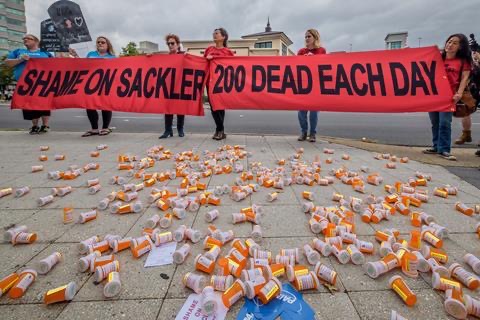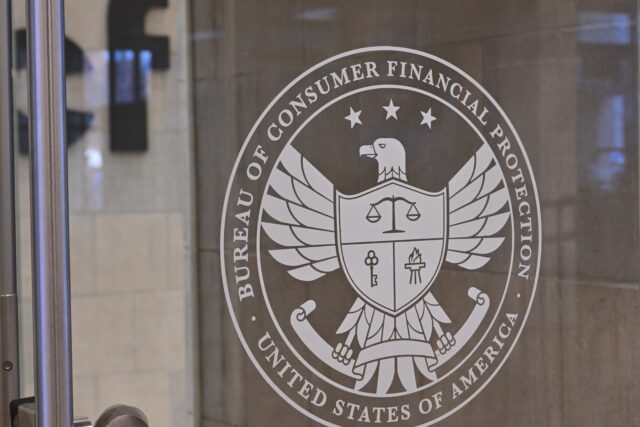Morally (and Financially) Bankrupt: Purdue Pharma
The Post-Mortem: A Column of Corporate Catastrophes (Part Three)
Jessica Graham
November 26, 2023
COLUMN THREE
Bad incentive structures. False reporting. Outright fraud. Corporate failures come in various shapes and sizes, often with different underlying causes. But they all have a shockwave of impact. This column examines various high-profile corporate catastrophes—analyzing what went wrong (whether intentionally or unintentionally) and examining how the resulting crash impacted everyday people along the way. Whether as high-profile as Enron, or as seemingly simple as the GE spinoff, there’s always more to the story than corporate projections and shareholder profits. For more parts of the series, see The Post-Mortem.
![]()
The case almost everyone, including your Fox News-obsessed aunt and long-lost cousin, is talking about—Purdue Pharma. Purdue Pharma flung itself onto front-page news when it filed for bankruptcy as a result of several felony convictions and lawsuit settlements. The first was in 2007, when Purdue Pharma signed a plea agreement with the U.S. government, agreeing to pay $600 million for false marketing. Even after one high-profile plea agreement, the pharmaceutical giant kept course—continuing to market OxyContin and increase its profits. By 2019, Purdue Pharma was facing endless lawsuits from users of its drug. Finally, in 2020, Purdue Pharma begrudgingly admitted to “substantial deliberate misconduct,” signing a plea agreement with the Department of Justice. That plea was the catalyst that finally forced Purdue Pharma’s high-profile bankruptcy.
So how exactly did we get here? Well, many know that Purdue Pharma was the producer of OxyContin, probably the foremost driving factor in the opioid crisis—not that they’d ever admit that, though. In fact, though eventually pleading guilty to some felonies (which we’ll come back to shortly), Purdue Pharma has held onto the stance that they did not cause the opioid crisis. In a profile for Vanity Fair, a member of the Sackler family tries to make the case that, in fact, it isn’t their fault, and the only reason they’re being blamed is because they haven’t taken control of the narrative. If you’re rolling your eyes, me too.
Of course, if your company is advertising that “addiction is not caused by drugs,” you are a true philanthropist and should not be ostracized by everyone with a brain. Clearly.
Perhaps a common theme of this column by now, the bulk of Purdue’s problems came from its nonsensical sales practices. For example, if you want to have Shout (yes, the song) stuck in your head for the foreseeable future, watch the introduction of this John Oliver video about the Sackler family. Approximately 1 minute and 15 seconds in, you’ll find a real video of a real sales regional director performing a parody cover of Shout, but inserting “sell, OxyContin” where it should say “shout.” You’ve been warned.
When OxyContin was first introduced to the market, it was presented as the be-all end-all of pain relievers. Because of its slow-release formula, Purdue Pharma insisted that the drug was less addictive in nature, and thus should be the only pain medicine used by professionals. In an interview with The New Yorker Radio, Steven May, a whistleblower sales rep, said that “he was trained to market the drug as one ‘to start with and to stay with,’ despite seeing early on its addictive potential.” “The mentality,” May explained, was that one dose of OxyContin lasted several hours longer than the other drugs being prescribed, which would then reduce the “peak and trough” element of the others (namely, that you wouldn’t experience a high and then a crash and need to take another). Of course, if you’re taking a drug every 12 hours instead of every 4-6, you can still get addicted to it.
Steven May, a whistleblower sales rep, said that “he was trained to market the drug as one ‘to start with and to stay with,’ despite seeing early on its addictive potential.”
It should be noted that these sales representatives are not clinicians. I, personally, was a sales associate at a major life and fitness brand, and received training for about a month. Those stakes were much lower. According to May, sales representatives for Purdue Pharma, who were providing dosage and, arguably, clinical evaluations to doctors for OxyContin, received three weeks of training. This included information about the drug and pain management, but it also included a much more common sales practice point—overcoming objections. That’s right, these sales representatives (who, not to beat down the point too strongly, have backgrounds in sales not pharmaceuticals) were taught how to overcome objections by medical professionals—including that the drug is “just too addictive.” The response, May says, was a line on the packaging: “the delayed absorption of the OxyContin was believed to reduce the abuse liability of the drug.” Of course, it all comes down to liability.

Image Source: Getty Images
For the Sackler family, the distinction between Purdue Pharma the corporation and the Sackler individuals has been the name of the game in reducing their personal liability. Richard Sackler, for example, was the president and co-chairman of Purdue Pharma. And yet, in his 8-hour-long deposition on the sales practices of Purdue Pharma, he had only one response: “I don’t know.” Of course, there were variations in ways that was said, but he held his ground on claiming to know nothing.
I’m sure there are situations where a CEO knows little about the inner workings of her sales representatives. Assuming that to be true, there is still little defense for mass marketing a drug known to be highly addictive, while claiming it isn’t addictive. What’s more, though, is that the Sackler family not only knew, but was deeply involved. As Maura Healey, Massachusetts State Attorney General, explains on Last Week Tonight, the Sackler family was present for board meetings, exchanged emails and memoranda about sales practices, and even went on ride-alongs with sales representatives to observe their practices.
The Sackler family was present for board meetings, exchanged emails and memoranda about sales practices, and even went on ride-alongs with sales representatives to observe their practices.
And yet, that Sackler family is still trying to sell the narrative that they did nothing wrong. Whether it be the profile in Vanity Fair or their own website, judgeforyourselves.info, the Sackler family remains consistent in pleading ignorance.
The worst part is that they might just get away with it. According to court records, starting in 2007 (right after the initial plea agreement), the Sackler family began funneling money out of Purdue and into their own pockets—pocket change amount to a whopping $10.4 billion. Having acquired significant portions of Purdue Pharma’s wealth (as much as 70% of its revenue), the Sackler family knew they were sitting pretty. When the time came for Purdue Pharma’s bankruptcy and mass tort settlements, the Sackler family agreed to contribute financially, but if and only if they obtained what’s called a third-party release. In short, this release would be giving the Sackler family blanket immunity from any creditors (those seeking financial reparations) of Purdue Pharma—including tort victims.
The bankruptcy court blocked this release, but the Second Circuit has since approved Purdue Pharma’s proposed plan. The Supreme Court has halted the restructuring, pending oral arguments in December of 2023. If this plan were to go through, the newfound corporation would contribute approximately $10 billion to opioid victims. The Sackler family would be contributing $4.325 billion…
and keeping the rest of their family wealth, which currently amounts to over $11 billion.
![]()
For more parts of the series, see The Post-Mortem.








